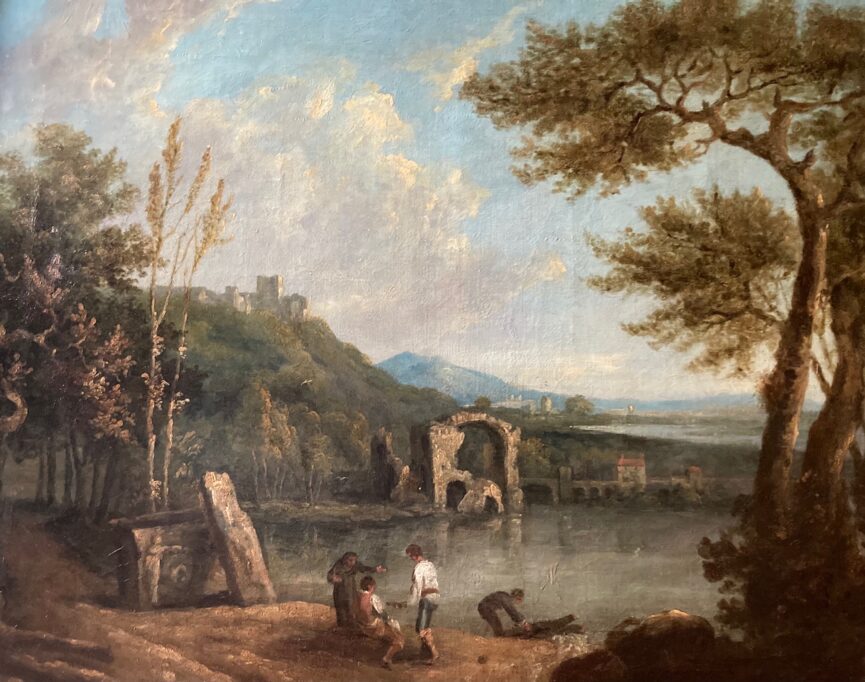Richard Wilson
1714 Penegoes - 1782 LlanberisA View of Lake Avernus
Oil on canvas: 24 3/4 x 29 3/4 in. 63 x 75.5 cm.
Provenance: English Private Collection
The painting is included in Dr.Paul Spencer-Longhurst’s Richard Wilson online, under P125C catalogued as “Richard Wilson….with later intervention after 1765”
Wilson has aptly been described as ‘the father of English landscape painting’, and this view well reflects the Italian phase of his career from 1752-8. It was during these years that the artist’s response to the Roman campagna and the works of Claude and Gaspard Poussin led him to evolve a specifically Virgilian genre of landscape, of which this is a fine example. The deceptively Claudian feeling of this view, however, created by its hazy distances and rounded masses of dark foliage edged with light, masks a direct compositional debt to Dughet.
The catalogue to the Tate Gallery’s exhibition The Grand Tour (10 Oct.1996-5 Jan 1997) clarifies the mythology of the site. Wilson visited Lake Avernus, north-west of Naples during the latter part of a six-year stay in Italy from 1752. A chalk drawing in the British Museum attests to his study of the landscape. The site, which is located in the Phlegraean (or burning) Fields, a volcanic area between Naples and Cuma, is particularly rich in classical associations. Its caves, earth tremors and volcanic flares gave rise to the belief since ancient times that the entrance to Hades, the Underworld, was located here. Virgil’s Aeneid relates how Aeneas, landing near Avernus, asked the Cumaean Sibyl to prophesy his future, and was led by her into Hades to meet the ghost of his father who foretold his destiny. In Wilson’s day the subterranean passage down which Aeneas is said to have descended into Hades survived in the so-called Grotto of the Sibyl. The classicaly educated Grand Tourists would have appreciated the arcane literary allusions of Wilson’s subject.
As with other popular views, Wilson executed several versions of this composition. Variants are in Tate Britain (no304,circa 1760), The Walker Art Gallery, Liverpool, and in the collection of the Duke of Buccleuch and Queensberry.

